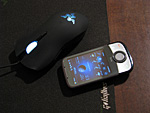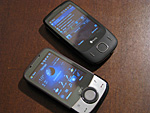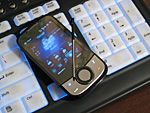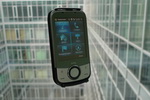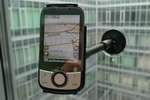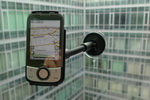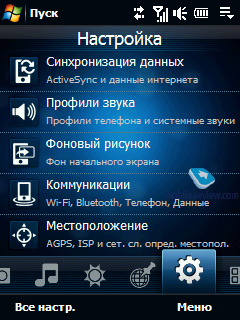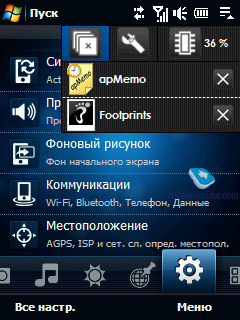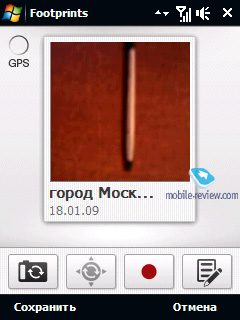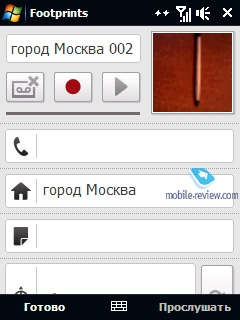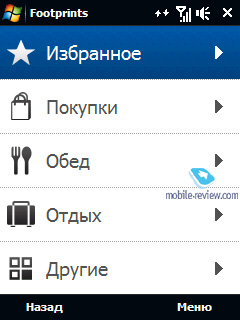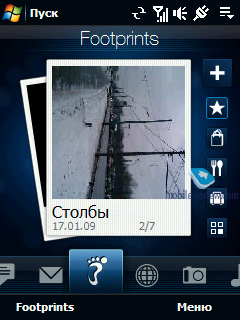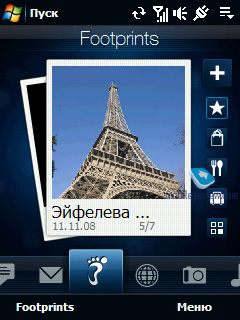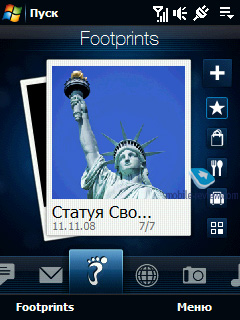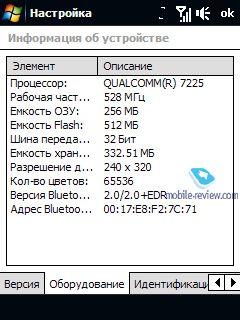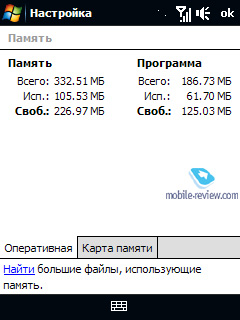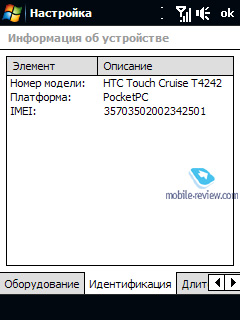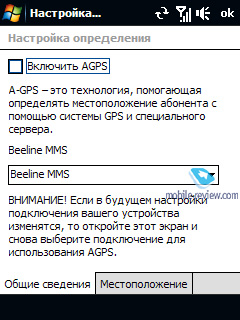|
|
Hands-on with HTC Touch Cruise (Iolite)
Live images of the HTC Touch Cruise
Table of Contents:
- Positioning
- Design, Size, Materials
- Controls
- Display
- Camera
- TouchFLO 2D
- Footprints
- Platform
- Impressions
Do you remember how many spy shots and gossips surrounded the release of the mysterious HTC Polaris that tuned out to be the Touch Cruise? HTC wasn’t as famous back then as it is today (and that’s largely due to its affairs with Android and Sony Ericsson), so in a very limited circle of Windows Mobile professionals every new solution was perceived as a huge leap forward. Perhaps, what I’m going to say will come as a surprise to some, but the HTC Touch Cruise was one of the first phones that changed the face of this Taiwanese manufacturer.
Nevertheless, its final spec sheet was quite a disappointment for all HTC fans, for many of them expected the original Cruise to come with nothing less that a 3.5-inch VGA display and a top-performing platform, although instead they get a run-of-the-mill device (at least, in their opinion).
On the other hand, the arrival of Touch Cruise made it very clear where HTC was going with its portfolio – effectively, they showed that coherent line-ups were about to replace their old framework, where they would roll out a couple of differently positioned products a year. Needless to say, that was the only way to go and their timing was perfect. That’s why even some disappointed voices couldn’t make that offering any less crucial for HTC’s future.
With this in mind, it should be easier for our readers to understand why the Touch Cruise comes with this particular set of features, instead of being a mobile powerhouse, that many thought was due after the lackluster original release.

Positioning
The HTC Touch Cruise was the first Touch-branded offering to focus on navigation, which wasn’t unexpected, as it capitalized on the ideas of one of HTC’s most popular phones ever, the P3300 (Artemis), whose most touted feat was navigation. And while the Touch series offers some other GPS-enabled communicators, over at HTC they consider the Touch Cruise their true navigation-savvy solution, even though at the beginning they struggled to communicate this notion to the users (in view of a pretty poor sales package and bug-ridden software).
However HTC have learned the lesson and addressed all these issues with the second iteration of the Touch Cruise that finally does feel like a real navigation-centric device.

Back to the table of contents >>>
Design, Size, Materials
As far as its physical design goes, the Touch Cruise resembles the original phone, plus it has certainly kept some traits of the HTC P3300, although they are not that striking.
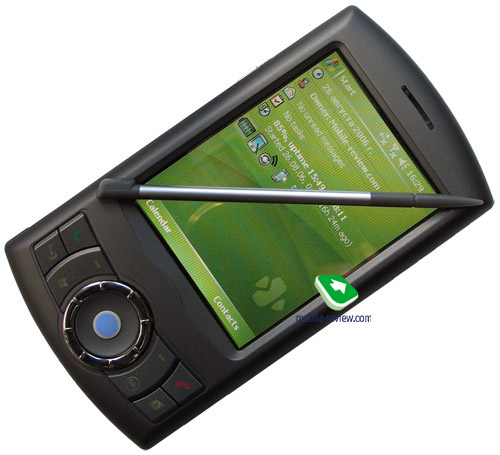
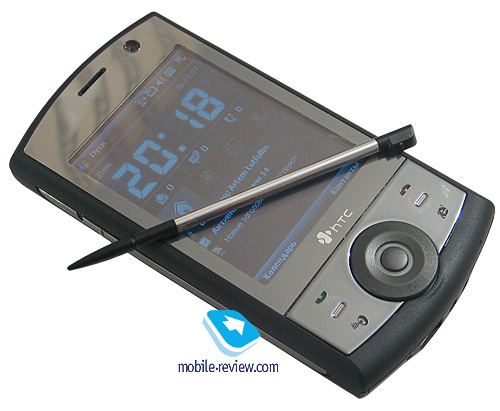

The key improvement over the original Cruise, apart from materials, is the phone’s size – the Touch Cruise has become much more pocketable (along with many other new HTC-branded communicators), so that now it’s almost as petite as the Touch Diamond or Touch 3G.






While in the Touch Cruise soft-touch plastic occupied most of the phone’s surface, the Cruise has it only on the back, utilizing glossy finish for its side plates and a metal display frame. Keep in mind, however, that these materials are subject to change, since we only played around with a prototype of the Cruise.
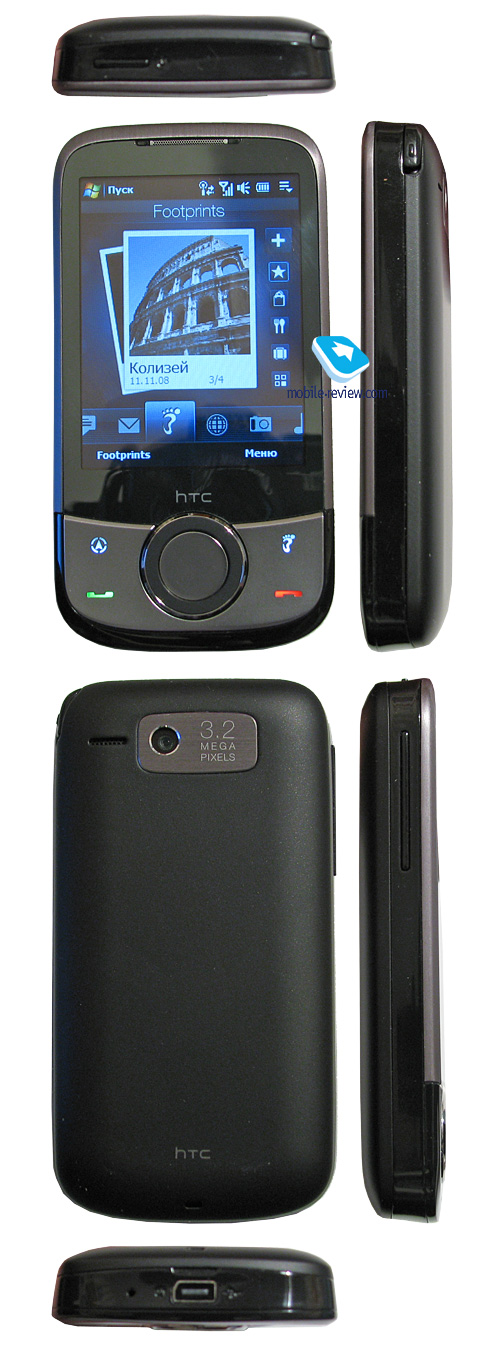
Back to the table of contents >>>
Controls
Not much has changed since the original Cruise – sitting in the middle is the scroll wheel with OK button fitted inside. Basically, this wheel has already become the trademark feature of HTC’s navigation-savvy offerings, so it’s very unlikely they’ll dump it any time soon. The front fascia has got rid of some more buttons, which doesn’t come as a surprise either. Furthermore, the Touch Cruise lacks a dedicated camera button, while its Power key and volume controls are hair-thin, just like in all other HTC’s latest and greatest phones.

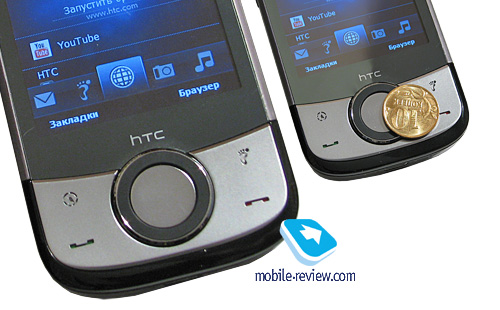




Back to the table of contents >>>
Display
The Touch Cruise comes armed with a typical mid-tier display – 2.8-inch (TFT) with QVGA resolution. Although it does offer decent viewing angles and is quite vibrant for its class.
Back to the table of contents >>>
Camera
The Cruise makes use of a no-frills 3 MP camera that doesn’t even have autofocus feature onboard. I’ve made a couple of sample shots – find them below.
 |
 |
| (+) enlarge, 2048x1536, JPEG |
(+) enlarge, 2048x1536, JPEG |
 |
 |
| (+) enlarge, 2048x1536, JPEG |
(+) enlarge, 2048x1536, JPEG |
 |
 |
| (+) enlarge, 2048x1536, JPEG |
(+) enlarge, 2048x1536, JPEG |
 |
 |
| (+) enlarge, 2048x1536, JPEG |
(+) enlarge, 2048x1536, JPEG |
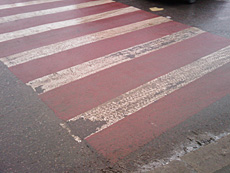 |
 |
| (+) enlarge, 2048x1536, JPEG |
(+) enlarge, 2048x1536, JPEG |
 |
 |
| (+) enlarge, 2048x1536, JPEG |
(+) enlarge, 2048x1536, JPEG |
Back to the table of contents >>>
TouchFLO 2D
Perhaps many of our readers have already seen speculations about the HTC Touch Cruise around the Web, where it’s referred to as "Iolite" or even T4242. And among all other things, some of these sources claims it's got a VGA screen and TouchFLO 3D user interface.
Unfortunately, we’ll have to disappoint those who really thought that was true – since the Touch Cruise comes with a QVGA screen, it really can’t make use of a sophisticated UI, so instead of TouchFLO 3D it ships with TouchFLO 2D. There is one improvement, though, that’s worth mentioning – it now features a new foot-shaped tab that leads to Footprints application. What’s that? Read on.
Back to the table of contents >>>
Footprints
The idea behind Footprints is fairly simple – suppose, you are walking around Red Square and, surprise, suddenly bump into the Kremlin. So you take out your Cruise, intending to take a picture, which is a must-do if it’s your first time in Moscow. But what will this picture tell you apart from the beauty of this building? Pretty much nothing. But using Footprints you’ll be able to:
- Take a picture of the Kremlin
- Specify the object’s name
- Write down some notes and attach them to the image
- Make a brief description of the object
- Retrieve and save the coordinates of the place where you took this image (via GPS).
I believe that now you have a good idea of how Footprints work. Also, there are several tabs where you can save various images and enter additional information .
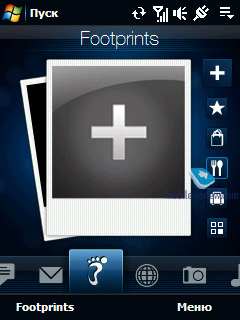
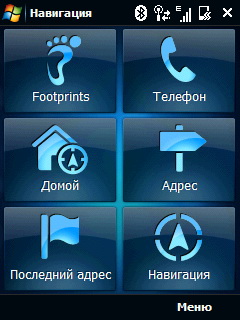
Navigation menu and Footprints pop up when you plug the Cruise into the car cradle
Back to the table of contents >>>
Platform
The platform that the Touch Cruise runs (Qualcomm MSM7225) isn’t much different from its predecessor, MSM 7201 – its CPU clock rate hasn’t changed and is still 528 Mhz, plus it comes with 256 Mb of RAM and 512 Mb of bundled storage (also there is a memory expansion slot for microSD (SDHC) cards).
By the way, since we’re talking about the platform, we can’t help but share a very interesting observation with you – like the image above indicates, the HTC Touch Cruise builds upon the hardware of the HTC Touch 3G. In fact, these two seem identical on many fronts apart from hardware, including controls layout, size and so on.
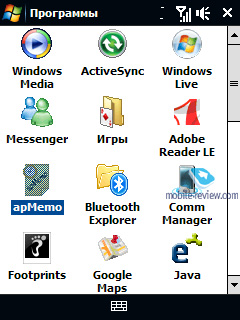
All in all, we were pretty content with the interface speed offered by the phone’s TouchFLO 2D – no complaints here.
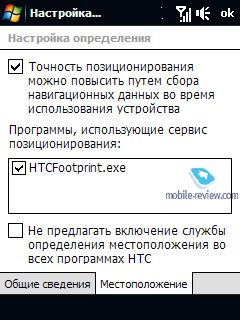
The Cruise also comes included with Wi-Fi, Bluetooth and GPS connectivity options, which have already become par for the course on most contemporary communicators. We’ll shed more light on its navigation software in our full review, but for now let me say that we have almost no niggles with it.
Back to the table of contents >>>
Impressions
So what’s the bottom line? Surprisingly, the Touch Cruise doesn’t have any bells and whistles and functionality-wise is in one line with the HTC Touch 3G, which is a no-frills communicator as well.

Now I want to get back to what this preview started with – many people expect HTC to churn out top-notch phones, such as the Touch Diamond and HD, one after another. And in this sense, there is no limit to where the demands of this portion of their audience can go. However, it’s important to realize that HTC are no different from any other phone maker, thus its resources and R&D potential are finite. That’s why there will always be top-of-the-line, entry-level and mid-tier phones in their portfolio. The latter, while being probably the most unpretentious type of all, is what they call the backbone of the company’s development.
On balance, the HTC Touch Cruise is a robust mid-range phone, and it's very unlikely it's going to change for better or worse by the time it starts shipping in Europe and Russia. There is no denying that some users will come out disappointed after twiddling with it, but it’s a part of HTC’s strategy, where mid-tier offerings are as essential as multimedia monsters.
We’ll take a closer look at the Cruise in our comprehensive review, so stay tuned.
Technical specifications:
- Class: communicator
- Form-factor: candy-bar
- Rivals: Glofiish X900
- Materials: plastic (soft-touch), metal
- Operating system: Windows Mobile 6.1 Professional, TouchFLO 2D user interface
- GSM 850/900/1800/1900 Mhz, EDGE/GPRS, UMTS/HSDPA 2100
- CPU: 528 Mhz (Qualcomm MSM7225A platform)
- ROM: 512 Mb
- RAM: 256 Mb
- Connectivity: Wi-Fi, Bluetooth 2.0+EDR (A2DP), proprietary ExtUSB (USB 2.0) for charger/data cable/headset, microSD memory card slot (with SDHC support
- Display: TFT 2.8” with QVGA resolution (320x240 pixels), capable of up to 65K colors
- Camera: 3 MP with fixed focus
- Navigation: Qualcomm’s gpsOne chipset (with A-GPS support)
- Battery: removable 1100 mAh Li-Ion battery
Back to the table of contents >>>
Artem Lutfullin (artem.lutfullin@mobile-review.com)
Translated by Oleg Kononosov (oleg.kononosov@mobile-review.com)
Published — 22 January 2009
Have something to add?! Write us... eldar@mobile-review.com
|
News:
[ 31-07 16:21 ]Sir Jony Ive: Apple Isn't In It For The Money
[ 31-07 13:34 ]Video: Nokia Designer Interviews
[ 31-07 13:10 ]RIM To Layoff 3,000 More Employees
[ 30-07 20:59 ]Video: iPhone 5 Housing Shown Off
[ 30-07 19:12 ]Android Fortunes Decline In U.S.
[ 25-07 16:18 ]Why Apple Is Suing Samsung?
[ 25-07 15:53 ]A Few Choice Quotes About Apple ... By Samsung
[ 23-07 20:25 ]Russian iOS Hacker Calls It A Day
[ 23-07 17:40 ]Video: It's Still Not Out, But Galaxy Note 10.1 Gets An Ad
[ 19-07 19:10 ]Another Loss For Nokia: $1 Billion Down In Q2
[ 19-07 17:22 ]British Judge Orders Apple To Run Ads Saying Samsung Did Not Copy Them
[ 19-07 16:57 ]iPhone 5 To Feature Nano-SIM Cards
[ 18-07 14:20 ]What The iPad Could Have Looked Like ...
[ 18-07 13:25 ]App Store Hack Is Still Going Strong Despite Apple's Best Efforts
[ 13-07 12:34 ]Infographic: The (Hypothetical) Sale Of RIM
[ 13-07 11:10 ]Video: iPhone Hacker Makes In-App Purchases Free
[ 12-07 19:50 ]iPhone 5 Images Leak Again
[ 12-07 17:51 ]Android Takes 50%+ Of U.S. And Europe
[ 11-07 16:02 ]Apple Involved In 60% Of Patent Suits
[ 11-07 13:14 ]Video: Kindle Fire Gets A Jelly Bean
Subscribe
|
